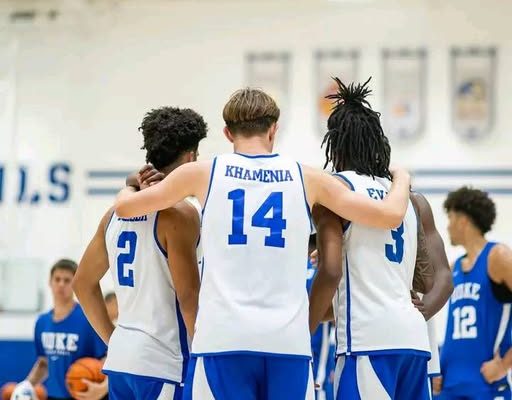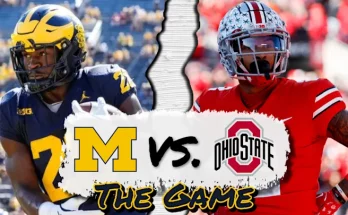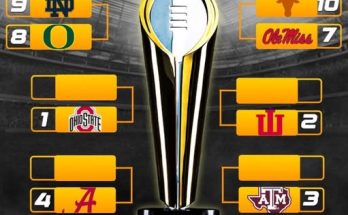If practice truly reveals the soul of a team, then Duke basketball might be on the verge of unleashing something terrifyingly complete. The echoes inside Cameron Indoor Stadium during closed practices this summer haven’t merely hinted at potential—they’ve screamed a message: this Blue Devils roster could be the most balanced, most dangerous collection of talent assembled in Durham in recent memory. The balance, in this case, isn’t just about having scorers at all five positions. It’s about synergy. It’s about versatility, two-way play, depth, and attitude. It’s about veteran leadership and freshman hunger converging to form a unit so tightly knit and adaptable that even in August, whispers of a Final Four trip seem more like forecasts than fantasy.
The conversation surrounding Duke’s identity has evolved. For years, the Blue Devils were synonymous with elite one-and-done freshmen carrying much of the weight. Some teams were top-heavy, others reliant on a single star or lacking defensive cohesion. But this year’s team—headlined by a combination of returnees with real experience and top-tier freshmen with a refined skill set—is threatening to flip that script. The question isn’t just whether they’ll be good; the question is whether anybody in college basketball will be able to match their completeness.
It begins with point guard Jeremy Roach, returning for what feels like a redemption tour. Roach has weathered the extremes of expectation, having been the floor general for both turbulent and promising iterations of Duke basketball. He’s battle-tested, and what’s evident from internal reports is that his voice has never been louder, his control never more poised, and his shot-making never more reliable. In practice, Roach is setting the tone. He’s pressing freshman guards full court. He’s initiating with tempo, then pulling back into half-court sets with surgical control. Coaches have remarked that he’s reading the floor like a seasoned NBA vet, and it’s not hyperbole. His presence alone gives Duke a calming force when chaos brews—and that kind of leadership is priceless in March.
But Duke’s backcourt doesn’t stop there. Freshman phenom Kon Knueppel has been lighting it up from deep in scrimmages, drawing comparisons to a young JJ Redick for his ability to run off screens and hit contested threes without losing his balance. What’s more impressive is his work ethic. Coaches say Knueppel is the first in the gym and last to leave. During practices, he’s been seen pushing teammates on closeouts, demanding more defensive accountability. He’s not just a scorer; he’s a culture fit. And his pairing with Roach could allow Duke to run both traditional sets and modern dribble-drive schemes, shifting gears depending on opponent and game tempo.
On the wings, it’s chaos for opponents. Jaylen Blakes, who has steadily improved his efficiency and physicality, has taken a massive leap defensively. He’s reportedly locking down on-ball matchups in ways that make even Roach cautious during practice sets. Tyrese Proctor, another returnee, looks like a completely different player. Confidence and poise are surging through his game. He’s extended his range, cut down on turnovers, and embraced a more physical style of defense. Proctor’s court vision in transition is now coupled with a consistent pull-up jumper, making him a two-level threat. He could be Duke’s most important X-factor, the kind of player who shifts a game without having to dominate the ball.
Then there’s Caleb Foster, the sophomore who has transformed physically and mentally. He came into last season with high expectations and flashes of brilliance, but struggled with consistency. This summer, he’s reportedly been the most improved player on the roster. Foster’s handle is tighter, his body leaner, and his decision-making crisper. Teammates have commented on how he’s become a vocal leader, not shying away from challenges but instead inviting them. He’s been pushing Roach in drills, demanding accountability from upperclassmen, and setting an example for the freshmen.
Speaking of the new class, Cooper Flagg—the highest-ranked recruit in the nation—is as advertised. And yet, he might be even more terrifying than expected. The buzz is real: Flagg’s motor runs non-stop. During live 5-on-5 sessions, he’s been grabbing defensive rebounds and pushing the pace himself, finishing above the rim or dishing no-look passes in transition. His defensive instincts are already elite. He’s recorded multiple blocks on closeouts, not just swatting shots but altering entire possessions. More than a highlight machine, Flagg is a fundamentally sound defender and a high-IQ offensive piece. He doesn’t force the game. He flows with it. Coaches are reportedly struggling to find holes in his game—which, for a freshman in August, is nearly unprecedented.
The frontcourt rotation, often a question mark in recent seasons, now feels like a strength. Returner Mark Mitchell is finally fully healthy and looks like a dominant two-way forward. He’s quicker laterally, giving Duke more switching ability on the perimeter, and stronger in the paint, allowing him to play up at the five in smaller lineups. In practices, Mitchell’s been seen guarding all five positions, chasing guards around the arc and bodying bigs in the post. His midrange jumper has become a real weapon, and his ability to run the floor adds transition explosiveness.



